Zafar Anjum
Random House
India, 2012
pp.268. Price Rs.399
At one level, corporate frauds are difficult to pull off. There are
thousands of employees, control systems, auditors, analysts, regulators, and
the board. And yet a look at the history of corporate scams, it makes us wonder
about the reams written about corporate governance, the golden peacocks, the
theory of an independent professional board. In case of Satyam, we also wonder
about banks, auditors and more. Reading about scams at the base level
titillative and at a cerebral level introspective. A book about scams and
frauds comes with huge and diverse expectations.
On the face, by focusing on the resurgence, we believe Zafar Anjum
tempers the expectations to the resurgence and reconstruction. But, a large
part of the book is dedicated to the background of trying to dissect and
reconstruct the modus operandi of the fraud perpetrated by Ramalinga Raju on
Satyam. The reconstruction effort gets disproportionately lesser pages. It
could have been very interesting if his research understood the homework done
by Mahindras in the run up to the acquisition. How does one evaluate a stake in
a company that was opaque and fraught with fraud? A company listed on NASDAQ
and facing class action suits in the US? How could a clannish company transformed
to professional one? Was the deal worth it?

 Unfortunately Anjum’s book does not provide fulfillment. It draws
heavily on existing literature and in particular from the book “The Satyam
Saga” published by Business Standard. While the book is well crafted, simple
and straightforward, the narrative is inspired by the chronicling style of Tim Bouquet and Byron Ousey who authored Cold Steel,
the saga of the marriage between Mittal Steel and Arcelor. Anjum also seems to
be inspired by Kingshuk Nag who wrote
The Double Life of Ramalinga Raju both for style and for content. While this
style makes the text readable, it does not come across as a rigorous piece of
work.
Unfortunately Anjum’s book does not provide fulfillment. It draws
heavily on existing literature and in particular from the book “The Satyam
Saga” published by Business Standard. While the book is well crafted, simple
and straightforward, the narrative is inspired by the chronicling style of Tim Bouquet and Byron Ousey who authored Cold Steel,
the saga of the marriage between Mittal Steel and Arcelor. Anjum also seems to
be inspired by Kingshuk Nag who wrote
The Double Life of Ramalinga Raju both for style and for content. While this
style makes the text readable, it does not come across as a rigorous piece of
work.
Inane trivia are a part of this style. The prologue subjects the readers
to how Anjum stumbled on story of Satyam, the flight [with the number] to
Hyderabad, the weather and the menu on board. With action he gets to the
chronicle mode: “Karnik could feel a
palpable sense of urgency in Goel’s voice. Being a representative of the
government, Goel seemed determined to save the situation at Satyam. Karnik gave
in and said yes, accepting the ‘responsibility’ in principle.” [p.93]. Unfortunately
this style is not followed in the reconstruction phase. It appears that Anjum
had access to the Mahindras [the spine sports the Mahindra-Satyam logo], but we
get no insights into the minds of Anand Mahindra or CP Gurnani. Except for the
fact that Anjum had an interview with Gurnani and visited the Satyam
Headquarters to meet a few senior level employees we do not get evidence of
extensive interviews and primary field-work, interviews with other stake
holders, which would be considered necessary even if we treated this as a
journalistic piece of work rather than academic research. Instead, there is a
dry rendering of events that followed the take over, the communications
strategy, a peek into Gurnani’s blog and the events thereafter. But: What about
the tension? What about the dilemma of whom to trust? The problem of what lay
within this black box? None of these come out. The resurgence story ends much
before it starts. The learnings we have: communication was important; there was
internal restructuring; a Shadow Board was set up to make decision-making
agile. The content could have been more insightful than a collage of material
neatly culled and ordered from secondary sources.
This should have been an important book in management literature. The concept
of “too big to fail” so often used in the banking sector was applied to an
unlikely sector. The government stepped in, while it could have let go. The
Enrons, the Worldcoms and many an Indian company have been allowed to fail. There
was something in Satyam that triggered the government to save it. It was saved
without a bail-out. A significant share of the credit for holding out must
rightly go to the employees, it should also go to the State for handling the IT
brand of India so carefully. The competitors in general seem to have acted with
maturity promising not to poach. It was a great case of Statesmanship and
revival. Anjum touches upon this, but fails to weave these pieces together.
And finally, Satyam tells us a tale of how decorative the boards are and
the limited role they have in “governance” if the management decides to cheat.
The Boards at best could give strategic inputs and directions, but governance?
A question we should probe very deeply.
There was a lot of fun and pun about the name Satyam. The book ends with
a note that indicates that ultimately as the truth prevails the name might
fully be erased when the company merges with Tech Mahindra. A case where the
truth prevailed but not Satyam?








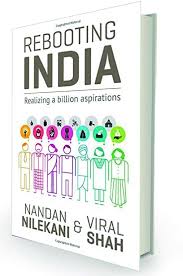








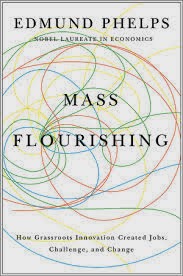









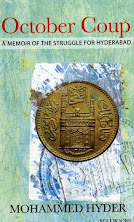

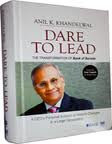














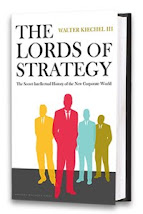














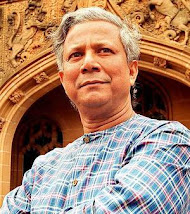
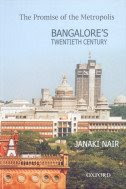







![Hyderabad: A Book [or two] and A Movie](http://3.bp.blogspot.com/_mxWA9ZVkKhQ/S0vnLAO90CI/AAAAAAAABYM/WgbSbAcAaEk/S214/luther1.0.jpg)

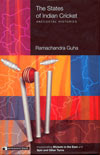





![Two Lives [and this is not about Vikram Seth]](http://1.bp.blogspot.com/_mxWA9ZVkKhQ/S0vjkyDYRvI/AAAAAAAABXM/mJGK-_gZiNg/S214/mansur.jpg)





No comments:
Post a Comment